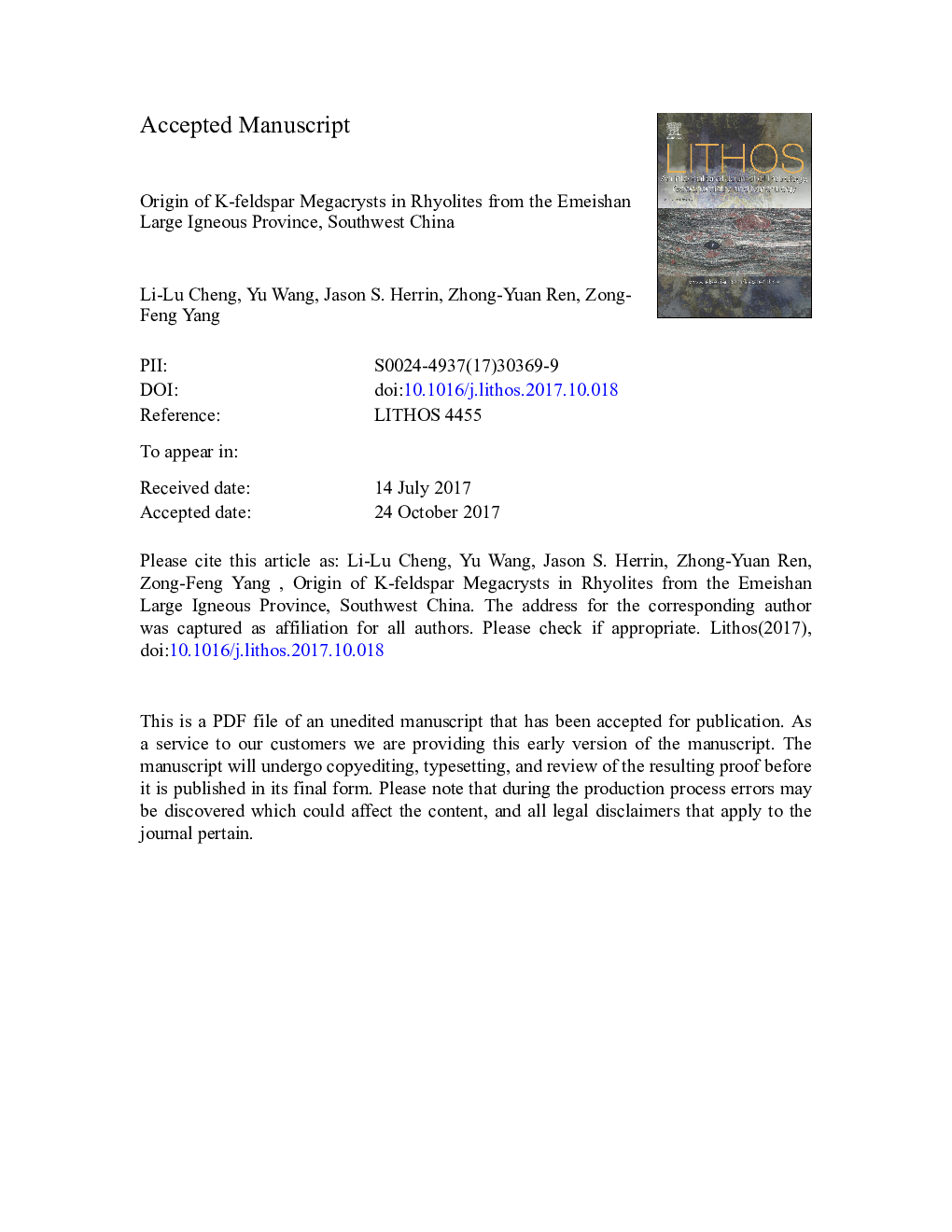| Article ID | Journal | Published Year | Pages | File Type |
|---|---|---|---|---|
| 8911870 | Lithos | 2017 | 52 Pages |
Abstract
Silicic rocks occur in the uppermost units of the longest volcanic succession (~ 5000 m thick) in the Binchuan area of the Permian Emeishan flood basalt province of SW China. They are predominantly rhyolites and to a lesser extent trachytes, both containing potassium feldspar megacrysts as the dominant phenocryst phase up to approximately 20 mm in size. These megacrysts contain domains of albite arranged in vein-like networks, likely formed by post-magmatic alteration. Crystal size distributions (CSD) suggest that these megacrysts grew in a stable magmatic system, consistent with relatively uniform core-to-rim compositional (K2O: ~ 14-16 wt%) and isotopic profiles 208Pb/206Pb ratios (~ 2.06-2.08 ± 0.005). Both whole-rock trace elements and Pb isotope ratios of these silicic rocks are similar to the Emeishan basalts, suggesting a common source for both mafic and felsic units and a limited role of crustal melting in genesis of the felsic units. Major and trace element models further indicate that these rocks could not have formed exclusively by re-melting of old crust or solidified basaltic rock, but must have formed through crystal fractionation from the flood basalts or possibly partial melting of basaltic rock followed by fractional crystallization. K-feldspar-bearing rhyolites are also observed in the last stages of other large igneous provinces. We suggest that they represent final melt fractions and their appearance in the magmatic system coincides with waning of voluminous magmatic activities.
Related Topics
Physical Sciences and Engineering
Earth and Planetary Sciences
Geochemistry and Petrology
Authors
Li-Lu Cheng, Yu Wang, Jason S. Herrin, Zhong-Yuan Ren, Zong-Feng Yang,
